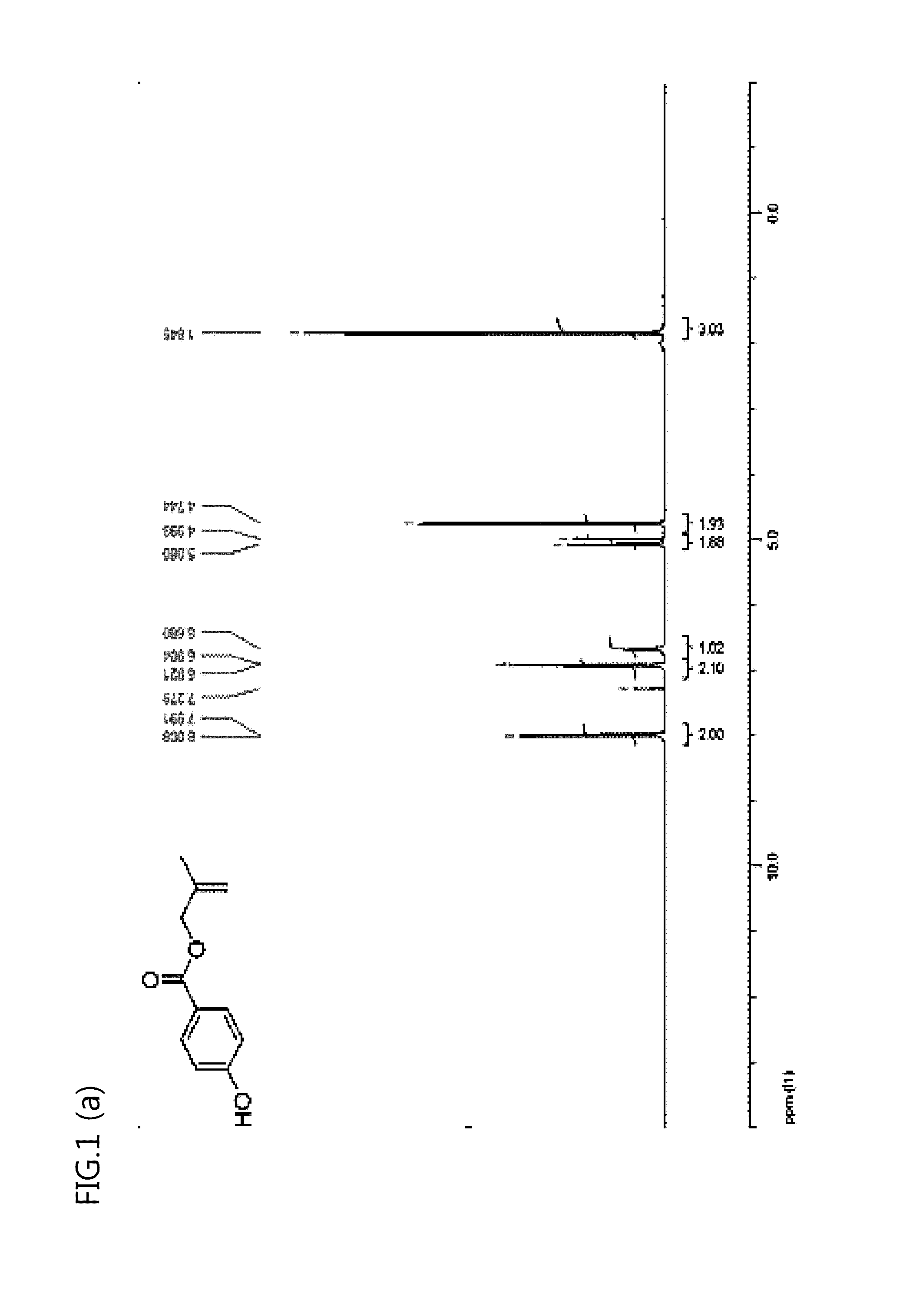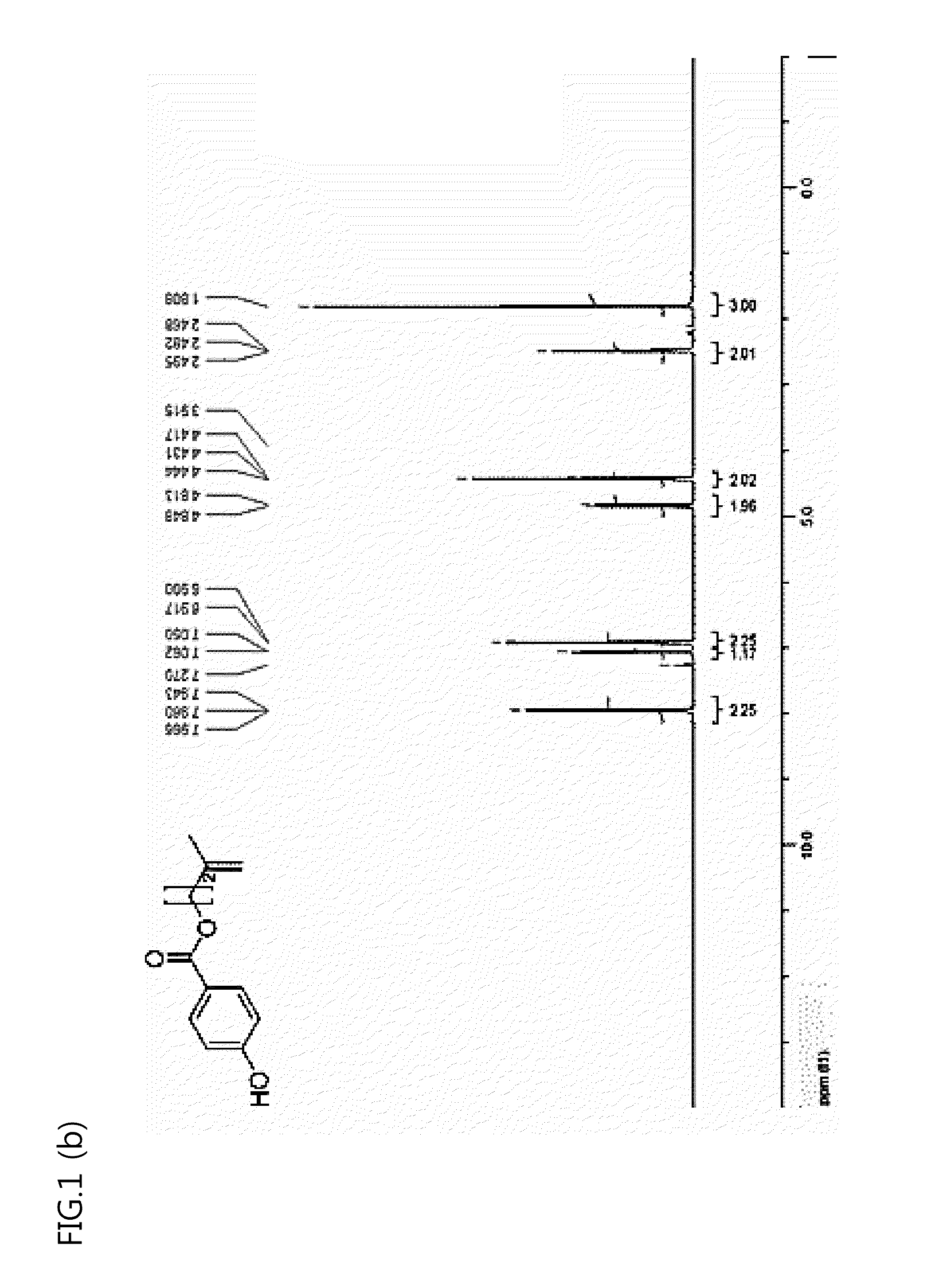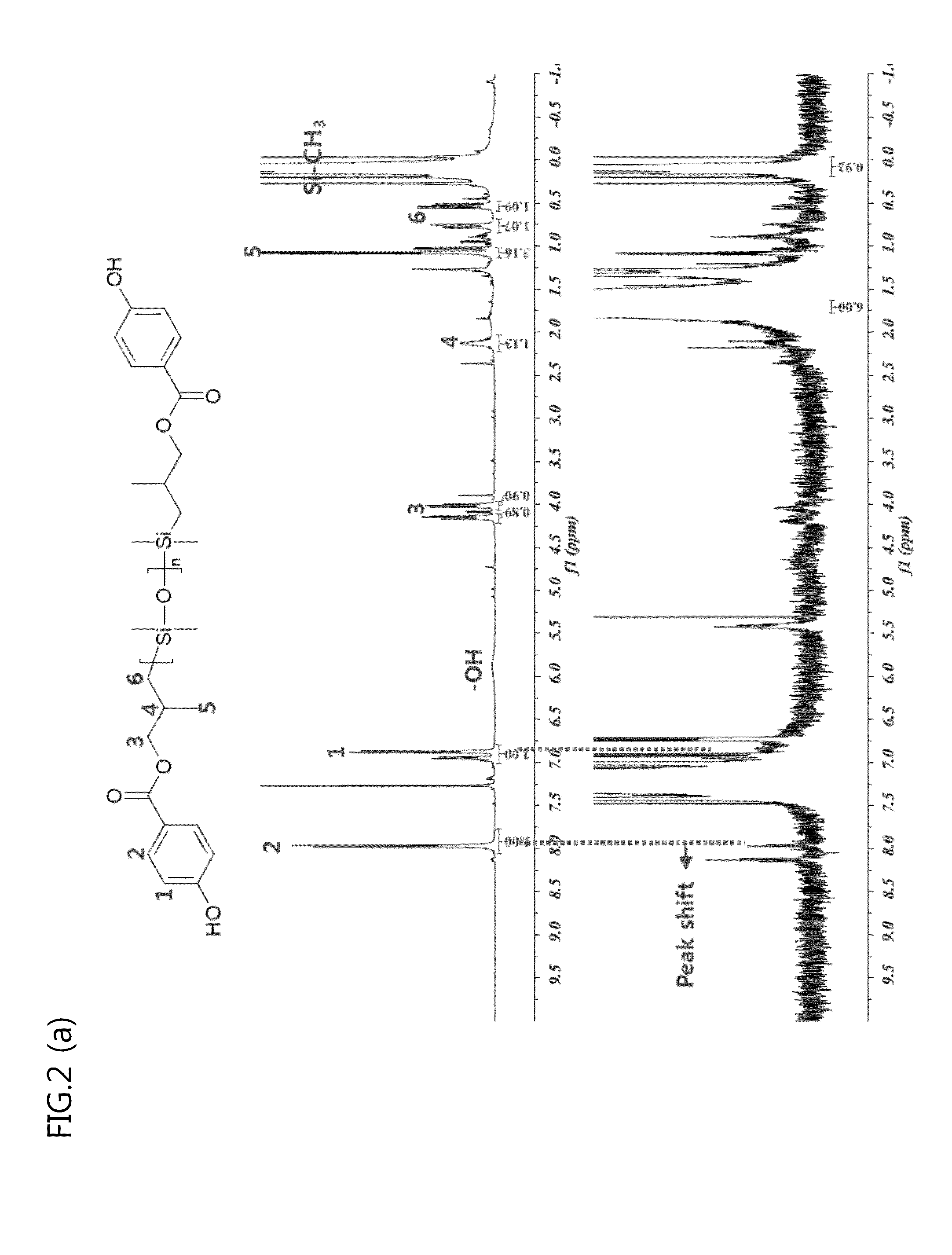Polyorganosiloxane compound, method for preparing the same, and copolycarbonate resin comprising the same
a polyorganosiloxane and compound technology, applied in the field of polyorganosiloxane compound, can solve the problems of reducing impact strength and the like, reducing transparency and the like, and most technologies have a high production unit cost, so as to achieve the effect of improving mechanical properties and maintaining transparency
- Summary
- Abstract
- Description
- Claims
- Application Information
AI Technical Summary
Benefits of technology
Problems solved by technology
Method used
Image
Examples
example 2
Preparation of Compound Designated as No. 4 in Reaction Formula 4 Below
[0093]
[0094]An experiment was repeated in the same manner as in Example 1, except that, in the section of Example 1, 19.1 g of 2-methyl-1-butenol (222 mmol) was added instead of 16.0 g of 2-methallyl alcohol (222 mmol).
[0095]As a result, 29.1 g of methylbutene hydroxybenzoate as a compound designated as No. 4 in Reaction Formula 4 was obtained. A structure of an obtained methylbutene hydroxybenzoate was confirmed with 1H NMR (see FIG. 1 (b) below).
[0096]In addition, an experiment was repeated in the same manner as in Example 1, except that 6.13 g of methylbutene hydroxybenzoate (29.7 mmol) obtained as the compound designated as No. 4 in Reaction Formula 4 was used instead of 6.9 g of methallyl hydroxybenzoate (36 mmol), which was used in the section of Example 1, obtained as the compound designated as No. 4 in Reaction Formula 2.
[0097]The polyorganosiloxane, a terminal of which was modified, obtained according ...
experimental example
Preparation of Copolycarbonate Resin
[0100]A copolycarbonate resin and an injection specimen comprising each of the siloxane compounds of Examples 1 and 2 and Comparative Examples 1 and 2 were prepared as follows.
[0101]1784 g of water, 385 g of NaOH, and 232 g of bisphenol A (BPA) were added to a polymerization reactor and were then dissolved while mixing under a N2 atmosphere. 4.3 g of p-tert butylphenol (PTBP) and 13.1 g of the siloxane compound obtained according to each of Examples 1 and 2, and Comparative Examples 1 and 2, which was dissolved in methylene chloride (MC), were added thereto. Subsequently, 128 g of triphosgene (TPG) was dissolved in MC, and then a dissolved TPG solution was added thereto and reacted therewith for 1 hour while maintaining pH of the TPG solution at 11 or more. After 10 minutes, 46 g of triethylamine (TEA) was added thereto and thereby a coupling reaction occurred.
[0102]After a total reaction time of 1 hour and 20 minutes, pH was lowered to 4 to remov...
PUM
| Property | Measurement | Unit |
|---|---|---|
| Percent by mass | aaaaa | aaaaa |
| Percent by mass | aaaaa | aaaaa |
| Glass transition temperature | aaaaa | aaaaa |
Abstract
Description
Claims
Application Information
 Login to View More
Login to View More - R&D
- Intellectual Property
- Life Sciences
- Materials
- Tech Scout
- Unparalleled Data Quality
- Higher Quality Content
- 60% Fewer Hallucinations
Browse by: Latest US Patents, China's latest patents, Technical Efficacy Thesaurus, Application Domain, Technology Topic, Popular Technical Reports.
© 2025 PatSnap. All rights reserved.Legal|Privacy policy|Modern Slavery Act Transparency Statement|Sitemap|About US| Contact US: help@patsnap.com



